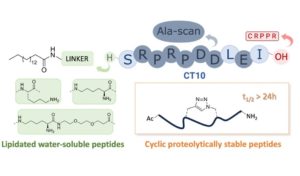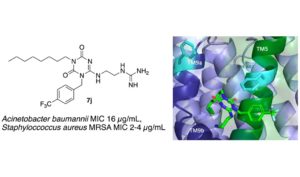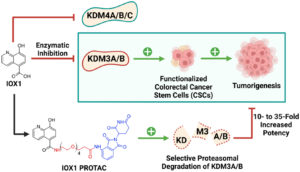RSC Medicinal Chemistry is delighted to present our Editor’s choice collection
This collection showcases some of the best articles published in the journal, handpicked by our Associate Editors and Editorial Board members.
Below we have a selection of recent RSC Medicinal Chemistry articles chosen by Editorial Board member Dr Hayley Binch (Hoffman-La Roche, Switzerland). Take a look at which articles he chose and why.
Hayley’s favourite articles
 |
The medicinal chemistry evolution of antibody–drug conjugates
Adrian D. Hobson* RSC Med. Chem., 2024, 15, 809-831 |
Hayley’s comments:
“This article written from a medicinal chemistry perspective provides specific and detailed molecular optimization insights, especially for the linker and payload, which have a disproportionately massive impact on the ADC’s overall properties.”
| Target agnostic cellular screening in the era of chemically induced proximity
Meizhong Jin* RSC Med. Chem., 2025, 16, 4532-4539 |
 |
Hayley’s comments:
“This review highlights the significant potential of target agnostic cellular screening when leveraged with chemically induced proximity, a revolutionary new paradigm in drug discovery, to identify novel, difficult-to-predict opportunities for disease intervention. This is especially crucial given the growing challenges and increasing complexity encountered with target-focused methodologies.”
 |
Prodrugs and their activation mechanisms for brain drug delivery (Open Access)
Ida Aaberg Lillethorup, Andreas Victor Hemmingsen and Katrine Qvortrup* RSC Med. Chem., 2025, 16, 1037-1048 |
Hayley’s comments:
“This review provides unique and detailed insights by systematically summarizing the specific activation mechanisms used to ensure prodrug selectivity within the Central Nervous System. This focus on the “back-end” activation process, rather than primarily on Blood-Brain Barrier transport distinguishes it from other reviews that concentrate mainly on carrier-mediated transport systems or general strategies for crossing the barrier.”
Meet the Editor
 |
Hayley Binch, RSC Medicinal Chemistry Editorial Board Member
Hoffman-La Roche, Switzerland Dr Hayley Binch is Head of Medicinal Chemistry at Hoffmann-La Roche in Basel. She obtained her PhD at the University of Bristol, UK in the field of Organic Chemistry, followed by postdoctoral research at the University of Hamburg, Germany and King’s College London. In 1998, she joined the Medicinal Chemistry department of Vertex Pharmaceuticals, Oxford, focussing on kinase research in the field of Oncology. In 2006, she moved to Vertex San Diego to work on ion channels for pain and cystic fibrosis. In 2016, she joined as a Section Head within Medicinal Chemistry at Hoffmann-La Roche in Basel and subsequently became Head of Medicinal Chemistry in 2017. At Roche, the Medicinal Chemistry department supports the design and synthesis of small molecules to identify clinical candidates in the areas of Immunology, Infectious Diseases, Neuroscience, Oncology, Ophthalmology and Rare Diseases. |
We hope you enjoyed reading these articles. Keep an eye out on our collection webpage for more of our Editors’ favourite articles.






























